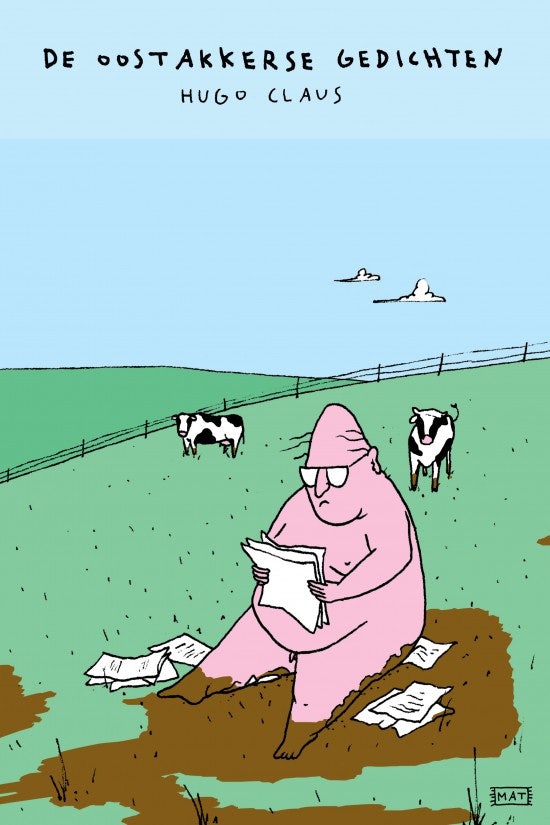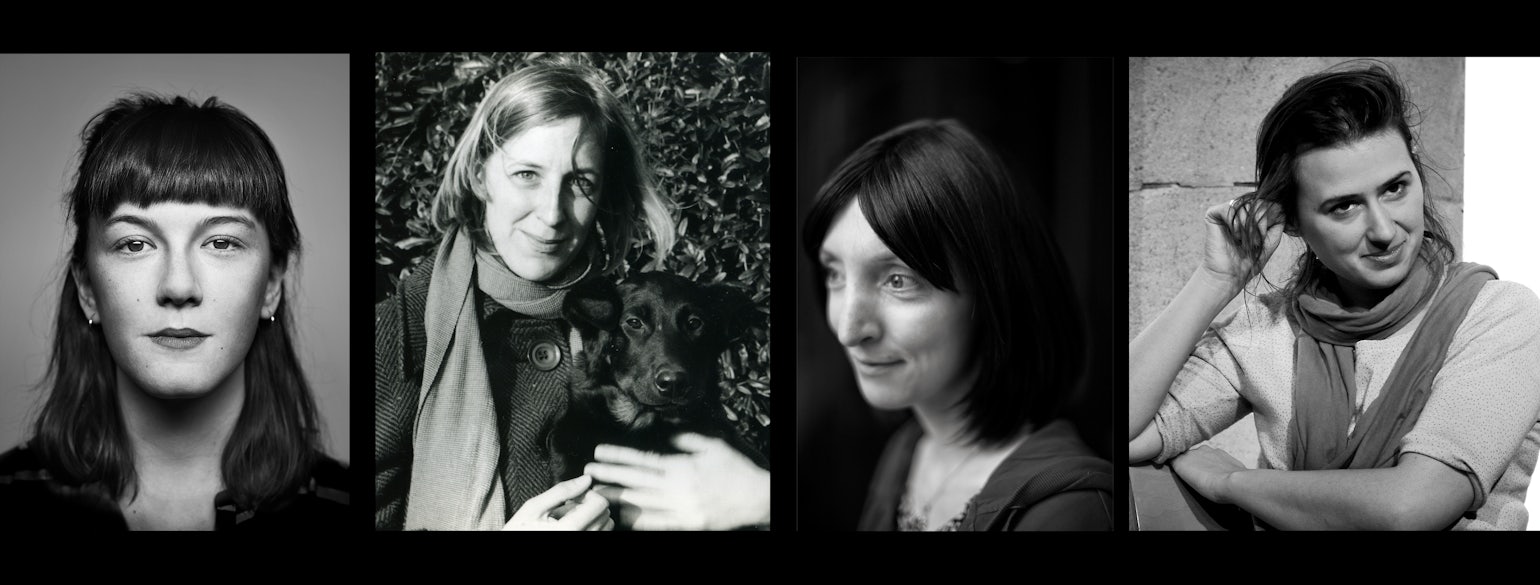Post-1945 poetry in Flanders: dynamic, open and diverse
The Second World War caused a huge existential crisis among young artists in Flanders. The scale of the Holocaust made them question the validity of the existing social norms and prevailing human values. The journal Tijd en Mens (Time and Man) became a meeting point for young authors who were searching for a new kind of writing that could do justice to a redefinition of human problems in such confusing times. Experimental poetry in Flanders was born out of this journal and out of the poets’ personal contact with the Dutch Vijftigers movement. Hugo Claus and Louis Paul Boon, thanks in part to the success of their prose, later emerged as literary giants, and Albert Bontridder, Ben Cami and Marcel Wauters also kept on writing poetry that can still be read today.

Alongside this movement towards innovation, other young poets actively continued to seek a place for themselves within traditional poetry, interpreting and regenerating it in their own ways, while influenced by the same existential questions. Jos De Haes died at a young age, leaving a modest but very intriguing and classical body of work, while Hubert Van Herreweghen renewed his work with every collection he published, particularly towards the end of his life. Christine D’haen grew into a poet with an erudite and idiosyncratic oeuvre, for which she received the Prijs der Nederlandse Letteren in 1992.
The poetry of Hugo Claus could serve as a model of what poetry in Flanders still is. Claus consistently continued along the same line that connected his predecessors Guido Gezelle, Karel Van de Woestijne, Paul Van Ostaijen and Maurice Gilliams. His poems show not only a process of building on what already existed, but also an opposition to religious and poetic assumptions, which he firmly rejected. Claus was also proud of being self-taught, a prolific reader and a translator who was open to influences from abroad. With this approach, he developed an eclectic oeuvre that integrates and plays on all kinds of different styles, genres, subgenres and registers. Claus’s poetry became the point of reference in relation to which all new poets in Flanders positioned themselves. This is why poetry in Flanders still continues to be so dynamic, open and diverse.
The experimental fragmentation
Experimental writing enjoyed a second peak with the Vijfenvijftigers group, Gust Gils, Paul Snoek and Hugues C. Pernath, who found each other through the journal Gard-Sivik. After an initial experimental phase, all three moved on separately and in different directions. Gust Gils chose a more absurdist and direct voice, and Paul Snoek, with his remarkable love poems, was idolised by the general public, while Hugues C. Pernath underwent a development that, in a sense, makes him the Paul Celan of Flanders. Experimental writing then fragmented into journals that were increasingly small, obscure and radical. Of the many poets whose work was published in these magazines, only the language-focused experiments of Wilfried Adams, Michel Bartosik and Leopold M. Van den Brande have withstood the test of time. Mark Insingel’s experiments in form and his varying linguistic repetitiveness are also still relevant.
The resistance to experimental writing took the form of a range of poetry movements, all of which breathed new life into the tradition.
The resistance to experimental writing took the form of a range of poetry movements, all of which breathed new life into the tradition. These schools loudly opposed one another at times, but they shared a vision of what they felt to be good poetry. A number of poets made their debut within one particular school, but then soon broke away by developing their own discourse, with which they were inextricably connected. Roland Jooris and Herman De Coninck, for example, are traditionally considered part of new realism, a movement that demanded more attention for reality in the poem. They soon became independent poets, though. Roland Jooris, influenced by painting, began to write in an increasingly minimalist style, and Herman De Coninck’s parlando poetry found its way to a very large audience. The first collections of Luuk Gruwez, Eddy Van Vliet and Miriam Van hee are invariably categorised as ‘neo-romanticism’ but these poets also quickly went their own ways. Luuk Gruwez became the poet of humanity and human weakness in his musical verses, while Eddy Van Vliet sought and found connection to the major themes of life, such as love, death and fathers. Miriam Van hee became the indisputable master of unfulfilled desires, sadness and melancholy, whispered in her elliptical verses.
Postmodernism or performance?
The postmodernists reacted against this, calling it a neo-Biedermeier paradigm in poetry. They produced a sound that had not been heard in Flanders before, inspired in part by foreign modernism. The postmodernists made eclectic poetry, taking their material from high and low culture, sprinkling their poems with quotes and not shying away from erudition, excess, exaggeration and polemics. Stefan Hertmans made his debut as a modernist, quickly winning readers with his poems, which contain an unprecedented wealth of meaning. In his first collections, Peter Verhelst often explored cultural sources such as Charles Baudelaire and painting, while he now writes fascinating poems that also appeal to the general public. In 2017, he won the Herman De Coninck Prize for the third time. Erik Spinoy creates tightly constructed and considered collections that excel in their investigation of different discourses and the role that these play in the formation of an identity. Dirk Van Bastelaere, the most radical and theoretical of these poets, won the Vlaamse Cultuurprijs voor Poëzie for his conceptual collection Affairs of the Heart and, in spite of a period of silence, remains controversial.
A following generation, which critics like to refer to as ‘post-postmodernists’, went further along the path that the postmodernists had paved for them, while also reacting against them. They retained the elements of the postmodernist project that they liked, while adding their own insights and convictions. It should be pointed out that the postmodernists, like the post-postmodernist poets, such as Paul Bogaert, Jan Lauwereyns, Bart Meuleman, Paul Demets, Els Moors and Eva Cox, have all found their own voices and that there is no longer any question of rival schools in the contemporary Flemish poetry landscape.
Parallel to the rise of postmodernism, poets of a more traditional persuasion also enjoyed success. Bernard Dewulf has been praised for his eye for detail and the philosophical reflection he brings to his writing. Charles Ducal, the first Flemish Dichter des Vaderlands, or poet laureate, is acclaimed for his mythological magnification of subjects such as love, marriage and family relationships and his active and critical position on socially relevant subjects. A new trend also emerged in the late 1980s and early 1990s: the performance poet. Tom Lanoye, who later scaled high peaks as a novelist and writer for theatre, made his debut with small collections of poetry, which he sold during his performances in bars. He later presented his texts on stage before enthusiastic audiences. Another poet who feels at home on the stage is Peter Holvoet-Hanssen, whose somewhat unconventional verses benefit from his exciting stage performances.
Contemporary trends in poetry
On the contemporary Flemish poetry scene, where most of the previously mentioned poets are still active, a number of striking trends have emerged.
Now that the size of print runs for individual collections is showing a downward tendency, it is important to note that the place for poetry seems to be shifting to the public space. Poetry pops up on walls in cities, the Dichter des Vaderlands initiative has brought poetry back into the mainstream media, every major city has its own poet – Bart Moeyaert and Tom Lanoye have both been Antwerp’s city poet, a position currently held by Maarten Inghels. The project De Eenzame Uitvaart (The Lonely Funeral), which involves a poet writing a poem to be read at the funeral of a deceased person without relatives, also shows the social importance of poetry.

Book launches and readings are often great successes, too. This is not only about poetry returning to its oral tradition, but has also meant many contemporary poets taking their first steps onto the stage. Andy Fierens, Delphine Lecompte, Maud Vanhauwaert and Charlotte van den Broeck have won over many audience members with their persuasive verbal performances, while also employing the rhetorical strategies of recitation in their poems. It is good, too, to see large numbers of female poets stepping into the limelight, while the rise of slam poetry and spoken word has ensured that the guild of poets is slowly but surely becoming less white.
The forms that poetry takes nowadays demonstrate the interdisciplinary nature and the diversity of the genre. Poems are accompanied by drawings in the graphic poetry of Lies Van Gasse and Annemarie Estor, poetry collections are turned into comics, poems are paired with film to make poetry films, poems are set to music, and so on. Things are going well for poetry in Flanders.
Leonard Nolens has grown to become the most important living poet in the Dutch language.
Meanwhile, independently of all the trends and developments outlined above, Leonard Nolens has grown to become the most important living poet in the Dutch language, winning the Prijs der Nederlandse Letteren in 2012. In his poetry, he also has an eye for dynamism, openness and diversity. His musical verses explore the issue of identity and the other major life questions, while also exhibiting a dynamic that, since the collection Breach, has alternated between ‘I’ and ‘we’. His lines are open in two senses of the word: they are open to every reader and also to the influence of foreign poets. His lines are diverse: they are simultaneously language and music, idea and philosophy, rhetoric and meaning. In that sense, he has taken over Hugo Claus’s role as Flemish master. All future Flemish poets will have to position themselves in relation to his extensive and monumental body of work.
